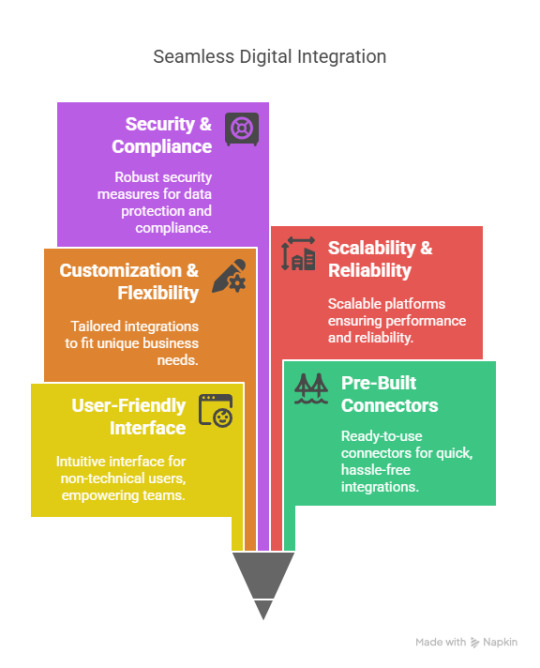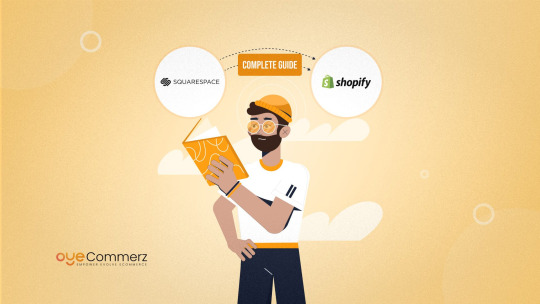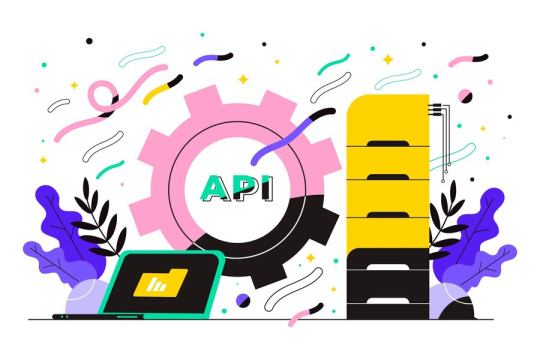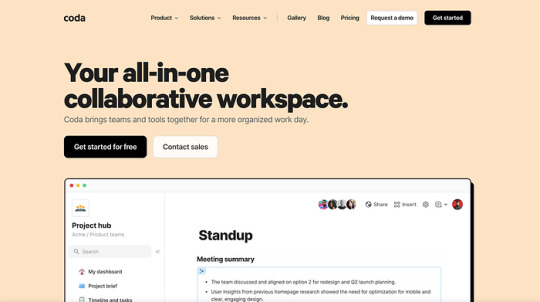#form builder app for shopify
Explore tagged Tumblr posts
Text
Best Shopify Form Builder Apps in 2025?

The majority of Shopify store owners are unaware of this: are those simple contact forms you’re using? Most likely, they are costing you sales.
Consider it. A client wants to know how much your products cost in bulk. They bounce after clicking on your contact form and seeing a complicated form. Why? Because your form simply informed them that you are not prepared for actual business, and serious buyers need to communicate seriously.
The selection of the appropriate Shopify form builder is often the deciding factor between a business that successfully takes leads and one that does not.
Read More…
0 notes
Text
Discover the top 5 Shopify form builder apps of 2024 designed to enhance your store's engagement and functionality. These tools offer customizable forms, seamless integration, and advanced features to streamline customer interactions. Elevate your e-commerce experience with the best form builders available.
0 notes
Photo

Mastering Shopify SEO: Your Path to Becoming an Expert - Untitled Part 1 (on Wattpad) https://www.wattpad.com/1424750721-mastering-shopify-seo-your-path-to-becoming-an?utm_source=web&utm_medium=tumblr&utm_content=share_reading&wp_uname=CompleteGurus Understanding Shopify's SEO Features At the heart of Shopify's SEO prowess lies a suite of built-in features designed to optimize your store for search engines. From customizable meta titles and descriptions to SEO-friendly URL structures and image alt tags, Shopify offers a plethora of tools to enhance your store's search engine performance. Mastering these features is the first step toward becoming a Shopify SEO expert, as they form the foundation of your store's SEO strategy. Leveraging Shopify Apps and Plugins In addition to its native SEO capabilities, Shopify boasts an extensive marketplace of apps and plugins that can further supercharge your SEO efforts. From keyword research tools and SEO analyzers to schema markup generators and backlink builders, these third-party solutions provide invaluable assistance in optimizing your store for search engines. Becoming proficient in utilizing these apps alongside Shopify's native SEO features is key to maximizing your store's visibility and driving organic traffic. Conclusion Becoming a Shopify SEO expert requires dedication, expertise, and a keen understanding of the platform's SEO capabilities. By mastering Shopify's built-in SEO features, leveraging third-party apps and plugins, crafting compelling content, implementing technical SEO best practices, and staying ahead of SEO trends, you can unlock the full potential of your Shopify store and drive sustainable organic traffic. So, if you're ready to elevate your store's search engine visibility and maximize its online potential, it's time to embark on your journey to becoming a Shopify SEO expert. https://completegurus.com/services/wix-seo-experts/ #ShopifySEOexpert
4 notes
·
View notes
Text
Custom Website Development or Templates: What's Best for Your Brand?
Whenever you come across any brand, what do you do?
Search Google to see if they have a website.
A website is a brand’s digital touchpoint. A well-built website is crucial for a brand to tell its story and make users stay and take action on the website. It defines a brand’s success online. Having a website is non-negotiable for any brand, but how to make a website is the question now. There are two ways: making a custom website from scratch or using a pre-designed template.

In this article, we’ll discuss the pros and cons of both ways of website development and how to choose which way to go.
Did you know?
It takes only 0.05 seconds to form an opinion about a website, according to SEMRush.
Custom Website Development: What it is and its pros and cons
Custom website development involves creating a website from scratch by developing custom code, functionality, layout, font, colour and design. Everything is customised according to the brand. One can decide what to include and what not to include in a custom website, unlike templates.
Creating a custom website is a time-consuming process and needs more financial resources as well. It involves a team of web developers, UI/UX designers, QA testers, content writers and many more.
Pros of Custom Website Development
Full control: With a custom website, one can tailor every element according to the brand’s personality – fonts, colours, images, videos, layout, etc. There’s no limitation on creativity.
Tailored user experience (UX): UX design can be customised from home page to checkout to make the user experience seamless and unique. Fun quizzes, interactive pages, custom forms, chatbots and so many more things can be added.
Flexible functionality: There’s no need to spend extra on functionalities a website doesn’t need, as it is custom and can be tailored according to the brand’s requirements. Even if a brand needs to have any additional features, it is easy to add.
Easy to scale: It is easy to scale and add on more functionalities and features to a custom website, as they are designed and structured for the long term. Apart from the ease to scale, custom websites perform well in terms of speed and SEO even after scaling. Performance is not an issue with custom websites.
More secure: There are no limitations on custom websites in terms of adding additional security features, unlike template-based websites.
Cons of Custom Website Development
Time-consuming: A custom website takes time to get ready and launch, as it needs to be made from scratch. From layout and design to coding and functionality, everything needs to be made.
Expensive: Making a custom website involves a team of specialists, which increases the cost of human resources. Additionally, the cost increases further with customisations. The initial costs are higher in comparison to template-based websites.
Who should go for Custom Website Development?
Brands which are in a niche business
Brands which need a tailored user experience
Big brands with an in-house team of website developers and designers.
Template-based Websites: What it is and its pros and cons
Template-based websites are made using pre-designed templates available online on website builders. They come with pre-designed website layouts and functionalities, which can be quickly customised to a brand’s requirements.
Templates are quicker and easier to make than custom websites. They don’t require a professional developer to build a website. A person with a basic understanding can also create a website. There are a lot of website builders on which a brand can make their website. They are: Shopify, WordPress, Wix, WooCommerce, etc.
Pros of Template-based Websites
Speed of Execution: A template is quick and easy to execute as the design and layout are already ready. The functionality and third-party apps and integrations need to be customised, and the brand’s data needs to be replaced. It is ready to go live in a short period.
Lower cost: The templates available online are either free or paid. Even the paid ones are more affordable than custom website development costs.
Built & tested by experts: The templates are built by experts who deploy the best practices. They are responsive and have a user-friendly design.
Variety of options available: There are a lot of website templates available online. One can choose depending on the industry and business they are in.
Cons of Template-based Websites
Limited customisation options: While website templates can be customised, it is limited. Adding unique features and making a custom code for any feature is not possible.
Performance issues: Adding a lot of plugins and features can sometimes slow down the website's speed and affect its performance.
Who should go for Template-based Websites
Brands which are tight on budget
Professionals requiring a website for online presence
Brands which are short on time
Making the choice: Custom Website Development vs Templates
Choosing the right way to go for a brand’s website depends on a brand’s requirements and factors such as time, budget, maintenance, etc. Consider the following factors before choosing:
Stage of business and budget
Timeline for the launch of the website
Need for customisation
Functionalities required
Resources you have
Creating Shopify Websites with The Pencil Advertising
If you choose to go with a template-based website, The Pencil Advertising will help you create a seamless website for your e-commerce business. We specialise in creating e-commerce website development services. We have officially partnered with Shopify for website development services.
Connect with us on Instagram or reach out to us here, and our team will reach out to you.
Let’s grow your business together!
#company#design#digital marketing#technology#website design#website development bd#website development company#website development services#website development agency#wordpress development#web development#web design#web development services
0 notes
Text
Why SaaS Integration Platforms Are the Backbone of Modern Business
371 SaaS apps per organization. That's the average number of software tools businesses use today. It might sound shocking at first, but it perfectly captures the modern enterprise's reality: a sprawling digital ecosystem powered by SaaS.
SaaS (Software as a Service) isn’t just a trendy buzzword. It's the infrastructure behind how we work, communicate, and grow businesses. From Gmail to ChatGPT, Salesforce to Jira, companies run on SaaS.
But with great SaaS power comes great SaaS complexity.

The more tools we adopt, the more fragmented our workflows become. Data lives in silos. Teams struggle with duplication, inefficiency, and blind spots. Integrating these systems manually is a nightmare. That’s where SaaS integration platforms step in to simplify, connect, and empower.
Let’s break it down.
What is SaaS, and Why Is It Everywhere?
Think of SaaS like Netflix for software. Instead of buying software outright, you subscribe and access it over the internet. It’s flexible, scalable, and always up to date.
The best part? There’s a tool for everything:
Gmail for communication
Zoom for meetings
Jira for task management
ChatGPT for smart AI tasks
Stripe for payments
But as your toolkit grows, so does the chaos.
You suddenly have dozens (or hundreds) of apps that don’t talk to each other. Important data gets trapped. Teams waste time copying and pasting. Decisions get delayed because insights are spread across tools.
This is the integration challenge.
Enter SaaS Integration Platforms
Also known as iPaaS (Integration Platform as a Service), these platforms are like air traffic control for your software. They connect all your SaaS apps, ensuring data moves seamlessly and workflows run like clockwork.
Instead of having disconnected systems, you build a unified ecosystem where apps speak the same language.
Let’s use an analogy. Imagine your SaaS apps are airplanes, and each data point is a passenger trying to transfer flights. Without a system, there’s chaos. Integration platforms are the air traffic controllers that guide each passenger (data) to its destination, safely and efficiently.
The Risks of Not Integrating Your SaaS Apps
When your tools aren’t integrated, problems pile up:
Data duplication: Entering the same info in multiple tools causes inconsistencies and confusion.
Wasted time: Manual data entry between apps is slow and error-prone.
Limited visibility: Without unified data, decision-makers fly blind.
Delayed decisions: No real-time insights means missed opportunities.
In short: disconnected apps cost you money, time, and agility.
The Must-Have Features of a Great Integration Platform
If you’re considering using a SaaS integration platform (and you should), look for these key attributes:
1. User-Friendly Interface
You shouldn’t need to be an engineer to build automations. The best platforms use drag-and-drop builders and clear workflows so anyone—even non-tech teams—can use them.
2. Pre-Built Connectors
Top platforms come with hundreds of pre-built integrations: Salesforce, HubSpot, Shopify, Gmail, and more. Think of them as plug-and-play bridges that speed up your setup.
3. Customizable Workflows
Every business is unique. Great integration tools let you customize data flows, create business logic, and build custom connections—all without writing code.
4. Scalability and Performance
As you grow, so does your data. Choose a platform that can scale, handling more connections and data without lag or failure.
5. Security and Compliance
This isn’t optional. Look for encryption, SOC2 compliance, and support for GDPR and HIPAA to ensure your data is secure.
Platforms like Konnectify check all these boxes. It’s a no-code, scalable, secure integration solution built for fast-growing teams.
The Different Types of SaaS Integration Architectures
There are several approaches to integrating SaaS apps, each with pros and cons:
1. Point-to-Point
This is the simplest form: one app connected directly to another. Great for small teams with just a few tools, but messy when you scale.
2. Hub-and-Spoke
A central "hub" app routes data to other apps ("spokes"). It's easier to manage, but can become a bottleneck.
3. Enterprise Service Bus (ESB)
More advanced than hub-and-spoke, ESB adds logic and routing intelligence. It’s common in big enterprises but often overkill for modern SaaS.
4. iPaaS (Integration Platform as a Service)
The modern, cloud-first solution. iPaaS offers flexibility, scalability, and no-code tools that work for both simple and complex integrations. Platforms like Konnectify fall into this category.
5. Embedded iPaaS
This is for SaaS companies that want to build integrations directly into their product—without spending months in development. It’s like adding native integrations that look and feel like part of your app. Perfect for B2B SaaS.
How to Choose the Right Integration Platform
The best platform for you depends on your specific needs. Here’s how to decide:
Step 1: Understand Your Needs
What apps do you use daily? Where is data getting stuck? What repetitive tasks are wasting your team's time?
Step 2: Check Integration Coverage
Make sure the platform supports your core tools. Need Salesforce + Stripe? Gmail + ClickUp? Konnectify offers 100+ pre-built integrations.
Step 3: Look at Support and Community
You want a responsive team, helpful documentation, and an active community. This is crucial if you don’t have a big IT team.
Step 4: Evaluate Pricing
Some platforms charge per integration, others by usage. Make sure the cost scales with your business. Konnectify grows with you—it's plans expand as your needs grow.
Why We Built Konnectify
At Konnectify, we saw companies struggle with integration chaos. So, we built a solution that simplifies the complex, streamlines your operations, and gives every team the power to automate—without writing a single line of code.
No-code visual builder
100+ pre-built app connectors
Embedded iPaaS for SaaS products
SOC2-compliant, secure architecture
Scales with your growth
Whether you're in sales, marketing, finance, or operations, Konnectify connects your stack and frees your team from repetitive, low-value tasks.
The Bottom Line
SaaS is everywhere—but without integration, it becomes a burden instead of a blessing.
SaaS integration platforms are no longer optional. They are essential tools that help you:
Eliminate silos
Automate tasks
Improve decision-making
Scale faster
Konnectify is your strategic partner in creating a connected, high-performing digital business. It's time to stop stitching apps together manually and start building an ecosystem that works for you.
Connect 100+ apps in a few clicks. Say goodbye to complexity, and hello to the future of work.
#saas#saas development company#saas platform#saas technology#software#it services#b2b saas#software development#information technology#ipaas
0 notes
Text
Choosing the Best Website Builder for Your Next Project: A Step-by-Step Guide
In today's digital world, having a professional and user-friendly website is essential for any business or personal project. Whether you're launching an online store, portfolio, or blog, choosing the right website builder can make or break your online presence. With so many options available, it can be overwhelming to decide which one is the best fit for your needs. In this step-by-step guide, we'll walk you through how to choose the best website builder for your next project.

Step 1: Define Your Goals
Before diving into website builders, it's crucial to define your project's goals. Ask yourself questions like:
Are you building a personal blog, a portfolio, or an e-commerce store?
What features do you need (e.g., e-commerce capabilities, contact forms, blogging tools)?
Do you need a mobile-friendly design?
Identifying these goals will help you narrow down your options and ensure that the website builder you choose aligns with your needs.
Step 2: Consider Your Budget
Website builders come in a wide range of pricing structures, from free plans with limited features to premium plans that offer advanced functionalities. Be sure to set a budget before you start exploring, as some of the best website builders may require an ongoing subscription.
For example:
Wix offers a free plan with limited functionality, but their premium plans start at around $14 per month.
Squarespace and Shopify are excellent for more professional needs but may be pricier, starting at $12 and $29 per month, respectively.
Choosing a builder within your budget ensures that you're investing in the best website builder for your project without overpaying.
Step 3: Evaluate Ease of Use
One of the biggest factors to consider when selecting a website builder is ease of use. Some platforms, like Wix and Weebly, are known for their drag-and-drop functionality, making them perfect for beginners. Others, like WordPress, may require more technical know-how but offer greater customization options.
If you're looking for a simple website, a builder like Wix or Squarespace may be perfect. But if you need more control over your design and content, WordPress or Shopify might be better suited for your needs.
Step 4: Design and Customization
The design of your website plays a crucial role in attracting and retaining visitors. Many website builders offer pre-designed templates, but the level of customization varies. Some platforms allow you to create a fully personalized design, while others may limit your options.
Squarespace is known for its beautiful, high-quality templates ideal for creatives and professionals.
WordPress offers extensive themes and plugins, giving you maximum customization but requiring more design skills.
Wix offers a large selection of customizable templates, and its drag-and-drop editor makes personalizing your site easier.
When selecting the best website builder, consider how much customization you want and choose a platform that offers flexibility to meet your design goals.
Step 5: Look at Features and Integrations
The best website builders often come with a range of features to help you create a fully functional site. Look for builders that offer tools to integrate with third-party apps and services, like email marketing, analytics, and SEO tools.
For example:
Shopify is a top choice for e-commerce and integrates well with payment gateways, inventory management, and customer service tools.
Wix has a large app market, allowing you to add functionality like booking systems or live chat.
WordPress has plugins for almost every feature imaginable, from SEO optimization to social media integration.
Make sure the platform you choose includes all the essential tools you'll need for your website's success.
Step 6: Test and Make Your Decision
Once you've narrowed down your options, take advantage of free trials or demo versions of the best website builders. Testing out a platform gives you a hands-on feel for its user interface, templates, and features. Most builders offer a 14-day trial or a free version, allowing you to explore without committing.
Conclusion
Choosing the best website builder is a crucial step in launching a successful online project. By defining your goals, considering your budget, evaluating ease of use, and looking at available features, you can find the platform that best suits your needs. Whether you're a beginner or an experienced designer, platforms like Wix, Squarespace, Shopify, and WordPress offer a variety of tools to bring your website vision to life. Take your time to explore and choose the right builder to make your project shine!
0 notes
Text
Migrate Like a Pro: Transition from Squarespace to Shopify Without Hassle

Is Squarespace Holding You Back? Time to Move Up! If you're running an online store on Squarespace and feeling limited by its features, you're not alone. Many eCommerce store owners face challenges with Squarespace's limited scalability, fewer app integrations, and restricted payment gateways. But don’t worry, migrating From Squarespace to Shopify can be your game-changer! Shopify’s powerful platform provides flexibility, customization, and robust eCommerce solutions that can help you grow faster.
Why Migrate from Squarespace to Shopify? Here’s why thousands of entrepreneurs are switching:
More Flexibility & Customization: Shopify offers countless themes, custom coding options, and drag-and-drop builders that allow you to create a personalized, high-converting store.
Wide Range of Apps & Integrations: Shopify’s App Store gives you access to thousands of apps that enhance your store’s functionality, from marketing automation to inventory management.
Better Payment Options: Shopify supports multiple payment gateways, making it easier for customers to pay, which means more conversions for you.
Advanced SEO Capabilities: Shopify is SEO-friendly and helps you rank higher on search engines, driving organic traffic to your store.
Scalability for Growth: Whether you’re a small business or an enterprise-level brand, Shopify grows with you, ensuring that your store is always ready for increased traffic and sales.
Step-by-Step Guide: How to Migrate from Squarespace to Shopify Smoothly
Step 1: Plan Your Migration Before making the switch, assess your current website. Make a checklist of:
Product details (images, descriptions, SKUs)
Customer information (names, emails, order history)
Blog posts and content
URL structure to maintain SEO integrity
Pro Tip: Create a backup of all your data to avoid losing any critical information.
Step 2: Set Up Your Shopify Store
Sign up for a Shopify account and choose a plan that fits your business needs.
Pick a theme that aligns with your brand and customize it to match your store’s style.
Add essential apps for marketing, analytics, and inventory management.
Why This Step is Important: A well-set-up store ensures a smoother transition and a better user experience.
Step 3: Export Data from Squarespace Squarespace allows you to export product data, pages, and blog content. However, not all data will transfer automatically, so you’ll need to manually migrate certain elements like custom pages or blog comments.
Export Guide:
Go to Settings > Advanced > Import/Export
Select Export and download the files in .CSV format
Review your data to ensure it’s clean and ready for import
Step 4: Import Data to Shopify
Use Shopify’s built-in import tool to upload your product data.
Navigate to Shopify Admin > Products > Import and upload your CSV files.
Double-check product descriptions, images, and metadata to ensure everything looks perfect.
Pro Tip: Use apps like Matrixify or Cart2Cart for a seamless data transfer.
Step 5: Design & Customize Your Shopify Store
Choose a theme that reflects your brand’s identity.
Customize your homepage, product pages, and blog posts to create a consistent brand experience.
Add navigation menus, contact forms, and call-to-action buttons for smooth navigation.
Why This Step Matters: A clean, intuitive design improves customer engagement and increases conversions.
Step 6: Redirect URLs to Preserve SEO One of the most critical steps during migration is to set up URL redirects. Since Squarespace and Shopify have different URL structures, you’ll want to redirect old URLs to avoid losing traffic or damaging your SEO rankings.
How to Set Up Redirects:
Go to Shopify Admin > Online Store > Navigation > URL Redirects
Add the old URLs and point them to their new Shopify counterparts
Pro Tip: Use 301 redirects to maintain SEO juice and ensure a smooth transition.
Step 7: Test Your Shopify Store Thoroughly Before launching, run a series of tests to ensure everything is functioning perfectly.
Test Checklist:
Place test orders to check the payment process
Verify that product descriptions and prices match
Check for broken links and page errors
Test website speed on both desktop and mobile
Common Challenges and How to Avoid Them
Data Loss or Formatting Errors: Double-check data before importing and use migration apps to prevent errors. SEO Disruption: Properly set up URL redirects and monitor your rankings post-migration. Design Misalignment: Customize Shopify’s theme to ensure consistency with your brand’s look and feel.
Benefits You’ll Enjoy After Migration
Increased Conversions: Shopify’s high-speed checkout process ensures fewer cart abandonments. Higher Organic Traffic: Advanced SEO tools help you rank better on search engines. Better Customer Experience: A seamless shopping experience leads to happier customers and repeat business.
Ready to Migrate Like a Pro? Let’s Get Started!
Making the switch from Squarespace to Shopify might seem overwhelming, but with the right plan and approach, you can migrate without hassle. Shopify offers limitless possibilities that help your business grow and scale faster. Whether you’re looking to enhance your store’s design, improve SEO, or manage inventory more effectively, Shopify has got you covered.
Set up your Shopify store with experts- OyeCommerz and watch your eCommerce business soar! Contact us now!
0 notes
Text
youtube
Are you new to Shopify? In this Shopify tutorial for beginners, we’ll show you how to set up your Shopify store step by step and introduce you to the best apps to enhance your e-commerce business!
Learn how to create your Shopify account, configure your store, and use Taranker to find top-rated apps like Zotabox Contact Form Builder. From customizing your store’s theme to setting up smart contact forms, this video is your ultimate guide to starting your online business with ease.
#taranker#shopify#shopify experts#shopify development company#shopify ecommerce development#shopify tips#ecommerce#Youtube
1 note
·
View note
Text
Top Custom Shopify Apps to Enhance Your Store

If you're running a Shopify store, you know how important it is to offer a seamless shopping experience for your customers. Custom Shopify apps can significantly enhance your store's functionality, helping you manage everything from marketing to inventory to customer engagement.
Why Custom Shopify Apps?
Custom Shopify apps are designed to cater to the specific needs of your store. Unlike generic apps, custom apps are tailored to fit your business processes, helping you achieve your goals more efficiently. Whether you need better inventory management, enhanced marketing tools, or a more personalized customer experience, custom apps can provide the solutions you need.
Top Custom Shopify Apps for Your Store
Oberlo Oberlo is a must-have for dropshipping businesses. It allows you to easily import products from suppliers directly into your Shopify store and ship them directly to your customers. Oberlo automates many aspects of the dropshipping process, saving you time and reducing the risk of errors.
Yotpo Customer reviews and ratings are crucial for building trust and boosting sales. Yotpo is a powerful app that helps you collect and display reviews, ratings, and photos from your customers. It also includes features for customer loyalty and referrals, making it a comprehensive solution for customer engagement.
Klaviyo Klaviyo is an email marketing app that helps you create personalized email campaigns based on customer behavior. With its powerful segmentation and automation features, Klaviyo can help you send the right message to the right customer at the right time, increasing your chances of making a sale.
Bold Product Options If you sell customizable products, Bold Product Options is the app for you. It allows you to add unlimited customization options to your products, such as text fields, drop-down menus, and file uploads. This app is perfect for stores that offer personalized products like engraved jewelry or custom t-shirts.
ReConvert ReConvert is a post-purchase upsell app that helps you maximize the value of every sale. With ReConvert, you can create custom thank-you pages with upsell offers, surveys, and discount codes. This app is designed to boost your average order value and improve customer retention.
PageFly PageFly is a drag-and-drop page builder that lets you create custom pages for your Shopify store without any coding knowledge. Whether you need to build a landing page, product page, or blog post, PageFly makes it easy to create beautiful, responsive pages that match your brand.
ShipStation Efficient shipping is critical for a positive customer experience. ShipStation integrates with Shopify to streamline your shipping process. It allows you to import orders, print shipping labels, and track shipments from one easy-to-use dashboard. ShipStation supports multiple carriers, giving you the flexibility to choose the best shipping options for your business.
Privy Privy is a powerful app for email capture and conversion. It helps you grow your email list with customizable pop-ups, banners, and embedded forms. Privy also includes features for cart abandonment and email marketing, making it a versatile tool for driving sales and retaining customers.
Why Choose Arham Web Works for Custom Shopify Apps?
When it comes to custom Shopify apps, Arham Web Works is the best place to get exactly what you need. Here's why:
Expertise and Experience Arham Web Works has a team of experienced developers who specialize in creating custom Shopify apps. They understand the platform inside and out and can build apps that integrate seamlessly with your store.
Tailored Solutions At Arham Web Works, they know that every business is unique. They take the time to understand your specific needs and create custom solutions that address your challenges and help you achieve your goals.
High-Quality Development Quality is a top priority at Arham Web Works. They use the latest technologies and best practices to ensure that your custom app is reliable, secure, and performs well. You can trust that your app will meet the highest standards of quality.
Ongoing Support Arham Web Works doesn't just build your app and walk away. They offer ongoing support and maintenance to ensure that your app continues to perform well and meet your
0 notes
Text
Behind the Build: Creating a Custom Form on Shopify

For Shopify stores, custom forms are revolutionary because they transform straightforward consumer interactions into effective instruments for obtaining feedback, handling requests, and customizing user experiences. This blog provides useful advice for business owners, developers, and designers by examining how MyAppGurus’ Shopify form builder software generates a unique form that goes beyond simple contact fields. Written in an approachable and engaging style, it takes readers on a conversational trip through the steps, difficulties, and lessons learned in creating the greatest form builder for Shopify.
Read More…
0 notes
Text
What should I look for in a Shopify theme for different types of websites?
Shopify is a leading e-commerce platform known for its user-friendly interface and robust features. However, selecting the right Shopify theme is critical for the success of your online store. Different websites have unique requirements, and the right theme can significantly enhance user experience and conversion rates. This blog post explores essential elements to consider when choosing a Shopify theme tailored to various types of websites.
1. General Considerations for Choosing a Shopify Theme
Responsiveness
In today’s mobile-driven world, having a responsive design is essential. A responsive theme adjusts to different screen sizes and devices, providing a seamless user experience on smartphones, tablets, and desktops. Mobile responsiveness enhances user experience and impacts your website’s visibility on search engines, as Google favors mobile-friendly websites.
Customization Options
Flexibility in customization allows you to tailor your online store to reflect your brand’s unique identity. Look for themes that offer robust customization options, enabling you to modify layouts, colors, fonts, and other design elements without extensive coding knowledge. Features like drag-and-drop builders and customizable headers and footers make the customization process easier and more efficient.
Speed and Performance
A fast-loading theme is essential for keeping visitors engaged and improving your site’s search engine rankings. Slow websites frustrate users, leading to higher bounce rates and lower conversion rates. Choose a theme optimized for speed, with clean coding practices and efficient loading of scripts and images. Tools like Google PageSpeed Insights can help evaluate a theme’s performance.
SEO Optimization
SEO optimization is crucial for driving organic traffic to your online store. Ensure the theme you select is built with SEO best practices, including clean, well-structured code, fast loading times, and proper handling of metadata. An SEO-friendly theme supports structured data, making it easier for search engines to crawl and index your site.
Support and Updates
Reliable support and regular updates are vital for maintaining your website’s security and functionality. Opt for themes from developers who offer ongoing support and regular updates to address any security vulnerabilities or bugs. Check the developer’s reputation and history of providing timely updates and support.
2. Online Stores for Physical Products
Product Showcase
The way you display your products can significantly impact purchasing decisions. Look for themes that support high-quality images and product zoom features. High-resolution images allow customers to see product details, and zoom capabilities enhance their confidence in purchases.
Inventory Management
Efficient inventory management is vital for running a successful online store. Choose themes that integrate seamlessly with Shopify’s inventory management tools or third-party systems. Features like bulk editing, SKU management, and integration with supply chain tools streamline inventory processes.
Cart and Checkout
A streamlined cart and checkout process can reduce cart abandonment rates. Look for themes with an intuitive, user-friendly checkout experience, offering features like multiple payment options, guest checkout, and auto-fill for address forms to enhance user experience and increase conversion rates.
Customer Reviews
Customer reviews build trust and encourage sales. Choose themes that include built-in review systems or are compatible with popular review apps. Displaying customer feedback prominently on product pages helps new customers make informed decisions and feel more confident in their purchases.
Promotional Features
Effective promotional features enhance marketing efforts and boost sales. Look for themes that support discounts, related products, and upselling opportunities. Discount banners, countdown timers, and customizable call-to-action buttons create urgency and encourage purchases.
3. Digital Products and Services
Download Management
Managing downloads efficiently and securely is crucial for digital products like eBooks, software, and music. Look for themes with robust download management features, including secure download links, automatic delivery of download links upon purchase, and the ability to limit downloads or set expiration dates.
Subscription Models
If your business model includes subscription-based services, choose themes that support subscription management and recurring billing. Features like flexible subscription plans, automated billing, and easy management of renewals and cancellations are essential.
Content Delivery
Efficient delivery systems for digital content are vital for a smooth customer experience. Choose themes that handle digital content distribution seamlessly, ensuring instant access to purchased goods and reliable content delivery networks for fast downloads.
Customer Support
Providing excellent customer support is critical for digital products and services. Look for themes that integrate with customer service tools like chatbots, live chat, and support ticket systems. These features help you offer immediate assistance and resolve issues quickly.
License Management
Handling licenses and digital rights management is crucial for digital products. Ensure the theme supports features to manage these aspects efficiently, including generating and distributing license keys, tracking license usage, and enforcing license terms.
4. Fashion and Apparel Stores
Visual Appeal
The visual appeal of your online store is paramount in the fashion industry. A theme with aesthetically pleasing layouts and stylish design can enhance user experience and make your products more attractive. Look for themes that offer high-quality image support, fullscreen galleries, and multiple image angles.
Size and Fit Guides
Detailed size charts and fit guides help customers make informed decisions and reduce return rates. Choose themes that integrate size charts on product pages and offer pop-up or expandable size guide options.
Lookbooks
Lookbooks inspire customers by showcasing how different pieces of your collection can be styled together. Themes that support lookbook features allow you to create visually appealing collections highlighting outfits, seasonal trends, or specific themes.
Product Variants
Efficiently managing product variants without compromising performance is crucial for fashion stores. Look for themes that handle product variants seamlessly, offering features like swatch selectors for colors and sizes, and dynamic variant images.
Social Proof
Incorporating social proof is essential for building trust and credibility. Look for themes that integrate with social media platforms, displaying customer testimonials, Instagram feeds, and user-generated content. Features like product reviews and customer photos enhance credibility and create a sense of community.
Choosing the right Shopify theme involves focusing on specific features tailored to the type of products you sell. Here is a product I use to make a website related to any niche, whether service-based business or products. Here’s the link to the product, https://delima.io/products/500-premium-shopify-themes-templates.
0 notes
Text
Integrating a Contact Form to Any API: A Guide for Shopify App Builders
In the bustling world of e-commerce, maintaining efficient and seamless communication with customers is vital. One of the most effective ways to ensure this is by integrating a contact form within your Shopify store. For shopify form builder, making sure that contact forms connect seamlessly to various APIs (Application Programming Interfaces) can significantly enhance functionality and improve user experience. This blog will explore the process of integrating a contact form with any API, specifically targeting the needs of Shopify app builders.

The Importance of Contact Forms
Contact forms are essential tools for gathering customer inquiries, feedback, and support requests. They act as a direct communication channel between customers and businesses. When integrated with APIs, these forms can automate data collection, streamline workflows, and improve customer relationship management (CRM).
Steps to Integrate a Contact Form to Any API
1. Choosing the Right Contact Form Builder
For Shopify app builder, selecting a contact form builder that offers API integration capabilities is crucial. Some popular options include:
- Typeform: Known for its intuitive interface and powerful API capabilities.
- JotForm: Offers extensive customization options and seamless API integration.
- Google Forms: Free and easy to use, though it may require additional tools for advanced integrations.
2. Setting Up the Contact Form
Once you have chosen a contact form builder, the next step is to create the form. Key components include:
- Form Fields: Ensure you include fields such as name, email, phone number, and message.
- Design: Customize the design to align with your Shopify store’s branding.
- Validation: Implement form validation to ensure accurate data collection.
3. Obtaining API Credentials
To connect your contact form to an API, you will need API credentials (such as an API key, token, or client ID and secret). These credentials are typically obtained from the API provider's developer portal. The process generally involves:
- Sign Up: Create an account with the API provider.
- Create an App: Register your app within the API provider’s platform.
- Get Credentials: Obtain the necessary credentials for authentication.
4. Configuring the Integration
With the contact form set up and API credentials in hand, you can now configure the integration. Here’s a simplified outline of the process:
- API Endpoint: Identify the correct API endpoint to which the form data will be sent.
- Authentication: Set up the necessary authentication headers using your API credentials.
- Data Mapping: Map the form fields to the corresponding fields required by the API.
- Error Handling: Implement error handling to manage any issues that arise during the data transmission process.
Benefits of API Integration for Shopify Apps
1. Enhanced Customer Experience
Integrating contact forms with APIs can automate responses and ensure that customer inquiries are promptly addressed. This leads to a smoother and more efficient customer experience, enhancing overall satisfaction.
2. Streamlined Operations
API integration can automate the process of data entry and management, reducing manual workload and minimizing errors. For instance, integrating a contact form with a CRM API can automatically log customer inquiries into the CRM system, streamlining customer support operations.
3. Data-Driven Insights
By integrating contact forms with analytics or CRM APIs, Shopify app builders can gather valuable data on customer interactions. This data can provide insights into customer preferences and behavior, helping businesses to make informed decisions and improve their services.
4. Increased Efficiency
Automating workflows through API integration can significantly increase operational efficiency. For example, automatically routing support requests to the appropriate department or team can expedite response times and improve service quality.
Best Practices for API Integration
1. Ensure Data Security
When integrating contact forms with APIs, it's essential to ensure that customer data is securely transmitted and stored. Use secure protocols (such as HTTPS) and implement robust authentication mechanisms to protect sensitive information.
2. Regularly Update APIs
APIs are regularly updated by their providers to enhance performance, security, and functionality. Ensure that your integrations are kept up-to-date to take advantage of these improvements and avoid potential issues.
3. Monitor Performance
Regularly monitor the performance of your integrated contact forms to identify and address any issues promptly. This includes tracking response times, error rates, and user feedback.
Frequently Asked Questions (FAQ)
Q1: What is a contact form builder?
A: A contact form builder is a tool that allows businesses to create and customize forms for collecting customer inquiries, feedback, and other information.
Q2: Why should I integrate a contact form with an API?
A: Integrating a contact form with an API automates data collection, streamlines workflows, and enhances customer relationship management, leading to improved efficiency and customer satisfaction.
Q3: How do I choose the right contact form builder for my Shopify store?
A: Look for a contact form builder that offers API integration capabilities, is easy to use, and allows for extensive customization to match your branding.
Q4: What are API credentials?
A: API credentials, such as an API key, token, or client ID and secret, are used to authenticate and authorize your app’s access to the API.
Q5: How does API integration enhance customer experience?
A: API integration automates responses to customer inquiries and ensures timely communication, leading to a smoother and more efficient customer experience.
Q6: What should I consider for data security in API integrations?
A: Ensure that customer data is securely transmitted and stored using secure protocols (such as HTTPS) and robust authentication mechanisms.
Q7: How often should I update my API integrations?
A: Regularly update your API integrations to benefit from performance, security, and functionality enhancements provided by the API provider.
Q8: What should I monitor in my API integrations?
A: Monitor response times, error rates, and user feedback to identify and address any issues promptly, ensuring a smooth and efficient integration.
Conclusion
Integrating a contact form with any API is a powerful way for Shopify app builders to enhance customer communication, streamline operations, and gain valuable insights. By choosing the right tools, setting up forms correctly, and following best practices for API integration, businesses can ensure a seamless and efficient user experience. Whether you are a seasoned developer or new to Shopify app building, understanding and implementing API integrations can provide a significant boost to your e-commerce operations.
By focusing on these strategies, Shopify app builders can create robust, customer-friendly applications that not only meet but exceed user expectations, driving growth and success in the competitive world of e-commerce.
0 notes
Text
Build Your Dream Website Without Writing a Single Line of Code
Building your dream website without coding is now achievable using website builders. Platforms like Wix, Squarespace, and WordPress offer user-friendly interfaces for this purpose.
Creating a website from scratch might seem daunting if you lack coding skills, but thankfully, technology has evolved to be more inclusive and user-friendly. Today, numerous platforms empower you to design, customize, and launch your website with minimal technical know-how.

>> My Best Recommended & Proven Way to Make $100 Daily — Watch THIS Video FREE Training to START >>
The No-code Movement: Empowering Creators
Imagine crafting a website like a Lego set. No coding, just building blocks. This is the no-code movement. It’s a revolution in website design. It’s transforming the way we create online spaces. Now, anyone with an idea can bring it to life. Let’s explore this transformative trend.
Rise Of Visual Development Platforms
Visual development platforms are at the heart of the no-code movement. They provide intuitive, drag-and-drop interfaces. These platforms make it simple to design complex websites. Users see changes in real time. They don’t need to understand the underlying technology.
Wix and Squarespace offer beautiful templates.
WordPress with its visual builders simplifies content management.
Webflow brings professional design tools to the table.
Benefits For Entrepreneurs And Creatives
The no-code wave is a boon for entrepreneurs and creatives. It opens up a world of possibilities.
BenefitDescriptionSpeedLaunch projects quickly without waiting for developers.Cost-EfficiencySave on development costs with DIY platforms.ControlMake updates instantly, no need to rely on others.CustomizationTailor your site to match your unique vision.AccessibilityTools are user-friendly, require no technical skills.
Entrepreneurs test ideas rapidly. They adapt to market changes with ease. Creatives showcase their work beautifully. They tell stories in ways that resonate with audiences.
>> My Best Recommended & Proven Way to Make $100 Daily — Watch THIS Video FREE Training to START >>
Choosing The Right No-code Website Builder
Embarking on a website creation journey no longer demands coding skills. Today’s no-code website builders empower anyone to craft their online presence with ease. Selecting the perfect platform is vital. Essential features and user-friendly interfaces top the checklist. Dive into the world of no-code builders and transform your vision into a digital reality.
Key Features To Look For
User experience stands front and center. A drag-and-drop interface simplifies design. Seek out customizable templates to kickstart your site. Responsive design ensures your site looks great on any device. Don’t forget SEO tools to climb the search rankings. Integration capabilities with other tools can give your site more functions.
Drag-and-Drop Functionality
Responsive Design Options
SEO Tools
Customizable Templates
App Integrations
Popular Platforms Compared
Several no-code builders stand out. We compare the giants. Discover which fits your needs best.
PlatformEase of UseCustomizationSEOPriceWixHighHighGoodVariesSquarespaceMediumHighExcellentVariesWeeblyHighMediumGoodVariesShopifyMediumMediumExcellentVaries
Wix shines with unmatched customization. Squarespace wins in design and SEO strength. Weebly offers simplicity and ease. Shopify excels for e-commerce. Choose the one that aligns with your goals and budget.
Designing Your Site: A Step-by-step Guide
Creating a website can be daunting. But fear not. Today’s tools make it easy. You don’t need to write code. Follow this guide and build your dream website.
Navigating Templates And Themes
Selecting the right template is crucial. It forms your website’s structure. Here’s how to choose:
Define your website’s purpose. Is it a blog, portfolio, or store?
Explore template galleries. Look for designs that fit your goal.
Preview templates. See them in action. Imagine your content in place.
Check for responsiveness. Your site must look good on all devices.
Once you’ve picked a template, it’s time to make it yours.
Customizing Your Design Without Code
Customization is key to a unique website. Here’s what you can do:
Use the site builder’s drag-and-drop tools. Move elements with ease.
Change colors and fonts. Match them to your brand.
Add images and videos. Make your site visually appealing.
Edit text. Click and type to add your message.
Experiment with layouts. Find the best flow for your content.
Remember, you can preview changes before going live. Take your time. Make it perfect.
Adding Functionality With Widgets And Integrations
Imagine crafting a website that not only looks stunning but also functions seamlessly. With the right widgets and integrations, your dream site comes to life, all without typing a single line of code. This section dives into how you can enhance your website’s capabilities, ensuring a delightful experience for your users and a more efficient backend for you.
Enhancing User Experience
User experience stands at the forefront of a successful website. Widgets play a crucial role here. They are easy-to-use components that boost website interactivity and engagement.
Chatbots answer questions instantly.
Feedback forms gather user insights effortlessly.
Image sliders showcase visuals attractively.
These tools ensure visitors find what they need quickly and enjoy their time on your site.
Streamlining Operations With Automation
Automation transforms how you manage your website. It simplifies tasks, saves time, and eliminates errors. Integrations with services like CRMs, email marketing, and analytics tools are vital.
ServiceFunctionCRMsTrack leads and customers.Email MarketingSend targeted campaigns.AnalyticsUnderstand visitor behavior.
With these integrations, your website runs like a well-oiled machine, giving you more time to focus on growth.
>> My Best Recommended & Proven Way to Make $100 Daily — Watch THIS Video FREE Training to START >>
Optimizing For Search Engines
Optimizing for Search Engines is key for any website’s success. You don’t need coding skills to achieve this. Proper SEO tactics can boost your site’s visibility and traffic.
Seo Best Practices For No-code Sites
Follow these simple steps to enhance your no-code website:
Choose the right platform that supports SEO.
Use relevant keywords throughout your site’s content.
Make sure your site loads fast.
Mobile responsiveness is a must.
Regularly update content to keep it fresh and engaging.
Create quality backlinks to increase authority.
Tools For Tracking Your Website’s Performance
Check your site’s health with these tools:
Google Analytics: Track visitor behavior and traffic sources.
Google Search Console: Monitor site performance in search results.
Bing Webmaster Tools: Gain insights on your site’s presence in Bing.

Credit: www.youtube.com
Launching Your Website
Ready to launch your dream website? It’s an exciting step! With no coding required, you can focus on the fun parts. Let’s ensure you have everything set for a smooth launch. Follow this guide to get started.
Pre-launch Checklist
Before your website goes live, check these essential items:
Test all links — Make sure they work.
Review content — Look for typos.
Optimize images — Ensure fast load times.
Set up SEO — Use keywords wisely.
Mobile responsiveness — Check on different devices.
Legal pages — Include privacy policy and terms.
Marketing Your Site Post-launch
Now, let’s draw visitors to your new site:
Create social media buzz — Share your launch.
Engage with emails — Send updates to subscribers.
Use ads — Consider paid advertising.
Collect feedback — Improve your site continuously.
Follow these steps to ensure your website’s success. Happy launching!
Maintaining And Updating Your Site
Keeping your website fresh and functional is key to attracting visitors. A no-code platform simplifies this task. Let’s explore essential maintenance strategies.
Regular Check-ups And Content Updates
Just like a car needs servicing, your website requires regular check-ups. Ensure links work and pages load quickly. Update content often to keep visitors coming back for more.
Weekly check-ups: Review for broken links and page errors.
Monthly performance reviews: Analyze loading speeds and user experience.
Content refresh: Add new blog posts, images, and videos to engage users.
Scaling Your Website As Your Business Grows
Your website should grow with your business. No-code platforms offer scalable solutions. Add new features or expand your site with ease.
StageActionStart-upUse basic templates and essential features.GrowthIntegrate more advanced tools and functionalities.ExpansionCustomize further and consider e-commerce options.

Credit: webflow.com
Frequently Asked Questions
Is It Possible To Create A Website Without Coding?
Yes, creating a website without coding is possible using website builders like Wix, Squarespace, and Weebly. These platforms offer user-friendly interfaces with drag-and-drop features.
Do You Need To Be Able To Code To Build A Website?
No, coding skills are not necessary to build a website. Many platforms offer drag-and-drop features, enabling easy website creation without coding knowledge.
What Is The Best No-code Website Builder?
The best no-code website builder is Wix, renowned for its ease of use and versatile design options.
How To Build A Website With No-code In 2024?
Choose a no-code platform like Wix or Squarespace. Select a template that fits your niche. Customize the design using drag-and-drop editors. Add your content, such as text and images. Publish your site with a click.
Can I Create A Website Without Coding Skills?
Absolutely, various platforms such as Wix, Squarespace, and Weebly enable users to construct professional websites using drag-and-drop tools and customizable templates.
Conclusion
Creating the website of your dreams is now within reach, and it doesn’t require coding expertise. With the intuitive tools and platforms available, anyone can launch a professional-looking site. Embrace the simplicity these solutions offer and start your journey to an impressive online presence today. Your dream website awaits — no code necessary.
>> My Best Recommended & Proven Way to Make $100 Daily — Watch THIS Video FREE Training to START >>
Thanks for reading my article on “Build Your Dream Website Without Writing a Single Line of Code”, hope it will help!
Affiliate Disclaimer :
This article Contain may be affiliate links, which means I receive a small commission at NO ADDITIONAL cost to you if you decide to purchase something. While we receive affiliate compensation for reviews / promotions on this article, we always offer honest opinions, users experiences and real views related to the product or service itself. Our goal is to help readers make the best purchasing decisions, however, the testimonies and opinions expressed are ours only. As always you should do your own thoughts to verify any claims, results and stats before making any kind of purchase. Clicking links or purchasing products recommended in this article may generate income for this product from affiliate commissions and you should assume we are compensated for any purchases you make. We review products and services you might find interesting. If you purchase them, we might get a share of the commission from the sale from our partners. This does not drive our decision as to whether or not a product is featured or recommended.
Source : Build Your Dream Website Without Writing a Single Line of Code
#howtomakemoneyonline#makemoneyonline#makemoneyonline2024#makemoneyonlinefromhome#makemoneyfast#affiliatemarketing#cpamarketing#blogging#emailmarketing#dropshipping#ecommerce#passiveincome#internetmarketing#digitalmarketing#clickbankaffiliatemarketing#affiliatemarketingtraining#cpamarketingtraining#makemoney#makemoneyonlineguide#freelancingtraining#makemoneyonlinewithblogging#amazonaffiliatemarketing#marketingstrategies#onlineadvertising#socialmediamarketing#contentmarketing#contentmarketingstrategy#socialmediamarketingstrategy#career#tech
0 notes
Text
Digital Excellence Unleashed: Elevating Your Brand with 66Marketings' Comprehensive Solutions
In the era of dynamic digital transformations, 66Marketings stands as a beacon of innovation, offering a spectrum of services to catapult your brand to new heights. Specializing in Shopify development, Facebook Ads, Google Ads marketing, TikTok advertising, landing page services builders, and social media management, we bring a comprehensive suite of solutions to the table.
Shopify Development: Crafting Seamless E-Commerce Experiences
At the core of our offerings is Shopify development, where we craft bespoke e-commerce solutions. Our seasoned developers at 66Marketings ensure that your online store is not just a transactional platform but an immersive journey for your customers. From responsive designs to secure payment gateways, we blend creativity and functionality to provide an unparalleled shopping experience.
Maximizing Reach with Facebook Ads
Step into the expansive world of social media dominance with our strategic Facebook Ads services. 66Marketings excels in creating campaigns that transcend traditional advertising. Through meticulous audience targeting, compelling visuals, and data-driven strategies, we ensure that your brand resonates with the right audience, driving engagement and conversions.
Google Ads Marketing: Elevating Visibility and Conversions
Gain prominence in search engine results and witness an upsurge in conversions with our Google Ads marketing expertise. 66Marketings navigates the intricacies of Google Ads, employing advanced techniques such as keyword optimization and ad targeting. We position your business prominently in relevant searches, ensuring optimal visibility and increased conversions.
TikTok Advertising: Igniting Engagement with Trendsetting Campaigns
In the fast-paced world of social media, TikTok stands as a trendsetter, and 66Marketings is your guide to this dynamic platform. Our TikTok advertising services leverage the app's unique culture, creating campaigns that captivate the audience. Harness the power of short-form videos to connect with a vast and engaged user base.
Landing Page Services Builders: Designing Gateways to Success
66Marketings transforms clicks into conversions through our meticulous landing page services builders. Our experts design visually captivating and conversion-focused landing pages. Whether it's lead generation or product promotion, our landing pages are strategically crafted to guide visitors seamlessly toward taking the desired action.
Social Media Management Services: Nurturing Your Online Community
A thriving online community requires more than just posts – it demands thoughtful engagement. At 66Marketings, we go beyond routine social media management. We build connections, foster interactions, and maintain a consistent brand presence across diverse platforms. Our holistic approach ensures that your brand stays relevant and resonates with your audience.
Conclusion: Forge Ahead with 66Marketings
As the digital landscape evolves, choose 66Marketings as your trusted partner in navigating these changes. From Shopify development to social media mastery, we are committed to sculpting a digital future where your brand thrives. Join hands with 66Marketings and witness the transformation of your digital presence. Your journey to excellence starts here.
0 notes
Text
How to Integrate SaaS Apps Without Coding – A No-Code Guide for Non-Technical People 🚀
Ever wished your SaaS apps could talk to each other automatically? Imagine new leads from your website instantly showing up in your CRM, or customer support tickets automatically syncing with your development team’s workflow—all without manual data entry.
If you’re not a developer, API integration might sound intimidating. But no-code SaaS integration solutions make it easy for anyone to connect apps, automate workflows, and sync data—without writing a single line of code.
📌 Want the full guide? Read: API Integration for Non-Technical People

What is API Integration? (And Why It Matters) 🤔
APIs (Application Programming Interfaces) allow different SaaS applications to communicate and share data in real time.
Why Does This Matter?
Without integration, you spend hours manually transferring data between platforms. With real-time API automation, everything updates instantly—no copy-pasting, no spreadsheets, no wasted time.
Real-Life Example: API Integration in Action
Let’s say you’re running an online store and using:
✔ Shopify to manage orders ✔ Google Sheets for order tracking ✔ Mailchimp for email marketing
Without automation, you’d have to manually enter every new order into Google Sheets and send emails manually. But with a top no-code SaaS integration solution, Shopify automatically updates Google Sheets and triggers email sequences in Mailchimp—without you touching anything.
🔗 Explore the best SaaS integration tools for non-technical users
Why You Need No-Code API Integration ✅
API integration isn’t just for developers anymore. If you want to:
✔ Automate your business processes ✔ Eliminate manual data entry & reduce errors ✔ Improve team collaboration & workflow efficiency ✔ Enhance customer experience with real-time updates ✔ Save time & scale your business faster
…then no-code SaaS integration solutions are for you.
🔗 Learn how to integrate APIs easily for beginners
Best No-Code API Integration Platforms 🛠️
If you’re not a developer but need to connect SaaS apps without coding, here are your best options:
1️⃣ Built-in Native Integrations (Basic but Limited)
✔ Available in tools like Slack, HubSpot, and Zapier. ✔ Good for simple automations (e.g., sending Slack alerts when a new lead is added). ❌ Limited customization—you can only use preset integrations.
🔗 Best SaaS integration software for business automation
2️⃣ No-Code API Integration Platforms (Best for Non-Technical Users) 🚀
If you need flexibility, real-time data sync, and custom automations, a top-rated API automation platform for SaaS is your best bet.
✅ No coding required – Set up in minutes. ✅ Drag-and-drop automation builder – Super easy to use. ✅ Real-time syncing – Always up-to-date data. ✅ Works with all major SaaS apps – CRMs, e-commerce, support tools, and more.
📌 Example: ✔ A new customer fills out a form on your website → Their info auto-syncs to your CRM → A Slack notification alerts the sales team → A follow-up email is triggered in Mailchimp.
🔗 Check out the most affordable API integration software for businesses
How to Set Up API Integration Without Coding (Step-by-Step) 🛠️
Step 1: Define What You Want to Automate
Do you need real-time SaaS integration for lead data?
Do you want customer support tickets to auto-sync with your dev team?
Do you need to connect multiple SaaS tools for better workflow automation?
Step 2: Choose a No-Code SaaS Integration Platform
Look for a top no-code API integration platform that: ✔ Works without technical skills ✔ Supports multi-step automations ✔ Syncs data in real time ✔ Can scale with your business
🔗 Find the best way to automate SaaS workflows without coding
Step 3: Configure Your Integration
Choose the SaaS apps you want to connect (e.g., Salesforce + Google Sheets).
Set up triggers and actions (e.g., "When a new customer is added in Salesforce, create a Google Sheets entry").
Map data fields so everything stays organized and accurate.
📌 Example: A new Zendesk support ticket triggers: ✔ A Jira issue for the dev team. ✔ A Slack notification for customer support. ✔ An update in Salesforce for the sales team.
🔗 Learn how to sync SaaS applications without technical skills
Common API Integration Use Cases for Businesses 🔄
Not sure what to automate? Here are some of the best SaaS workflows:
✔ Sales & CRM Automation – Sync leads from web forms to HubSpot or Salesforce. ✔ E-commerce Operations – Auto-update inventory & sales reports. ✔ Marketing Campaigns – Connect Facebook Lead Ads to email automation. ✔ Customer Support – Convert Zendesk tickets into Jira issues. ✔ Finance & Accounting – Automate invoice creation from CRM data.
🔗 See how to automate data flow between SaaS apps
Final Thoughts: API Integration for Everyone 🚀
API integrations used to be complicated, expensive, and only for developers. But with no-code SaaS integration tools, anyone can:
✔ Connect apps without technical skills ✔ Automate SaaS workflows in real-time ✔ Boost efficiency & reduce human errors ✔ Scale business processes effortlessly
🚀 Want to integrate SaaS apps without writing code? Check out the best SaaS integration tools for non-technical users and start automating today!
📌 Read the Full Guide Here 👀: API Integration for Non-Technical People
#saas development company#saas platform#software development#information technology#it services#saas technology#b2b saas#software#saas#whatsapp api
0 notes